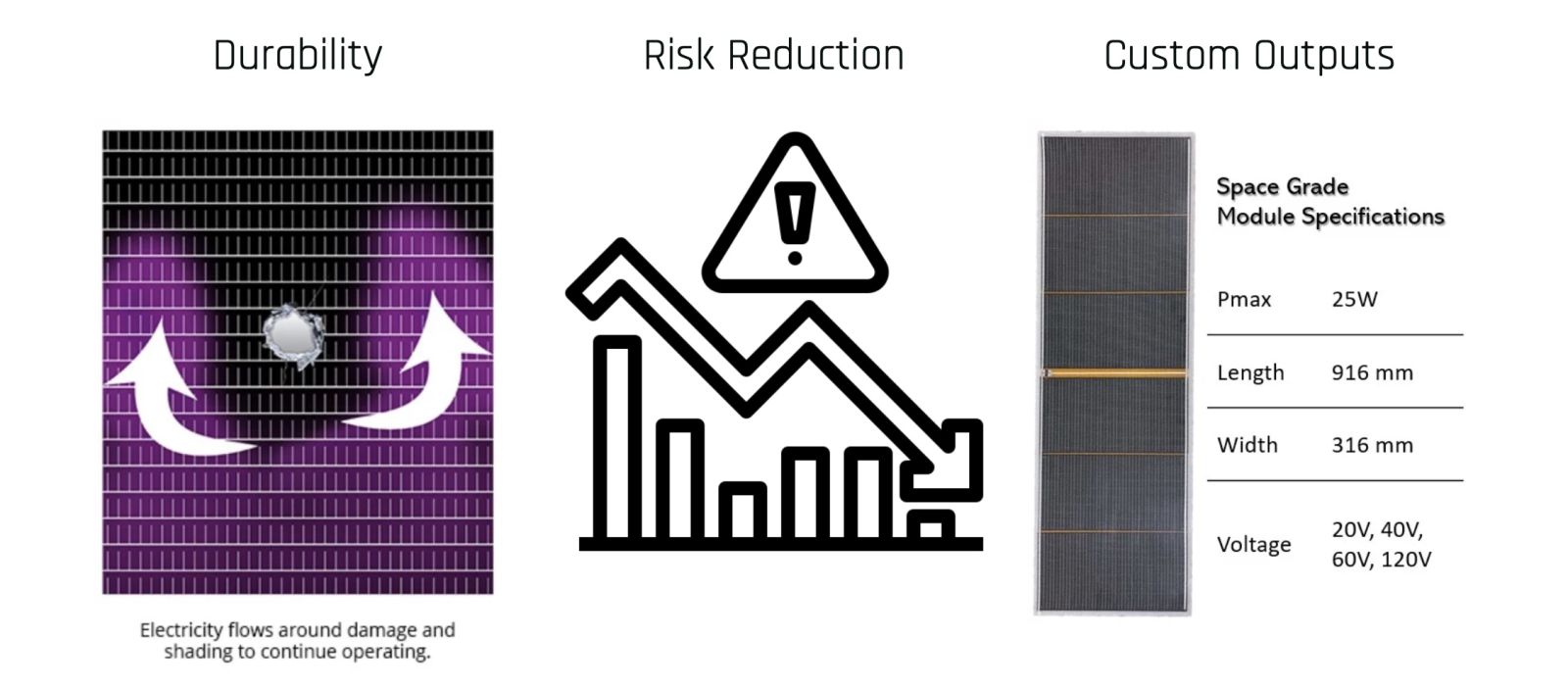Thin-Film Solar PV Unlocks Solar’s True Potential
When people think about solar technology, they most likely picture the rigid, heavy, rectangular panels that are installed onto the roof of their neighbor’s house, or on a commercial building somewhere around town. With that, many people hold a general understanding that the panels use energy from sunlight to help combat climate change. All correct conceptualizations and assumptions, but there’s room for so much more.
Those solar panels are certainly a terrific piece of technology to help in the ongoing fight against worsening climate change, and it’s wonderful to see them being utilized at a higher frequency in recent years, but curbing climate change will require every industry and green technology solution to find new ways to fulfill a higher potential for maximum impact. The solar industry is no different, as traditional solar panels’ size, shape and weight can limit their ability to be applied in many contexts that cannot accommodate their bulky form factor; our typical conceptualization of this technology doesn’t quite meet that higher potential the world needs on its own.
Fulfilling a technology’s full potential isn’t easy. It requires hard, science-based solutions, but those solutions can actually emerge from a place of creativity. In order to break free of stasis, industry thinkers and innovators must go beyond the established norms and designs to come up with green technology solutions that will play a further elevated role in the fight against climate change.
For the solar industry, that creative solution comes in the form of thin-film solar PV.

What is thin-film solar?
Thin-Film solar technology is lightweight and flexible, allowing it to be applied to structures and devices of all shapes and sizes, without needing to worry about the device undergoing weight-related stress, or possibly damaging it if the solar panels must be removed and replaced.
Traditional solar panels are wonderful, but they come with limitations; thin-film technology doesn’t pose a threat to existing panels, but instead acts as a natural, creative extension of them, fitting into the places that big, heavy, rectangular panels never could. Thin-film PV’s lightweight and flexible design allows for the utilization of solar power in a nearly endless array of applications. Our lives are powered by machines and devices of varying sizes, with curves, ridges, zig-zags, weight limitations, and all kinds of irregularities. These are uninhabitable for traditional panels, but fine for thin-film.
Unlocking the creativity of thin-film
Thin-film technology empowers businesses and designers with the opportunity to creatively incorporate the use of solar power into their products and devices, without sacrificing sleek designs or adding unnecessary weight. It might surprise you to learn that there are seemingly endless examples of devices that can run on solar power. In the hands of a creative developer, thin-film solar is the key to unlocking that solar power potential for nearly anything that currently runs on traditional batteries or electricity.
The popularization of thin-film solar will bring about a massive expansion of solar technology use across the globe. Suddenly, all kinds of gadgets and devices that are seldom associated with solar power, from watches and kitchen appliances, to military and defense devices, will be open and available for thin-film solar PV incorporation.
The more devices solar technology gets applied to, the closer solar power comes to fulfilling its maximum potential in the fight against the climate crisis.

Bringing two forms together for maximum impact
We’re so used to similar products and technologies being in competition with one another. That’s not at all what is happening here.
Thin-film is not meant to close the door for traditional solar solutions. It is meant to be an extension of it: a technology in the same family that can slip into the cracks where typical solar panels just won’t fit. The most effective solar power landscape is one that makes maximized use out of each solution, neatly fitting their respective attributes into applications that are best suited for them, rather than fighting for dominance over each other.
We make use of varying styles of similar products based on the given situation and circumstances in nearly every facet of life. When it’s very cold out, we put on a large coat, but when it’s merely a bit brisk, we throw on a sweatshirt. The way we think about and utilize solar power should be no different. In some instances, a traditional, rectangular solar panel is the best fit for the job. Other times, we need the flexibility of thin-film PV to properly affix the technology to a more irregularly shaped structure or device. Both create legitimate value. Without the creative use of thin-film PV, however, the solar industry simply will not be able to live up to its full potential in the fight against climate change.
Thin-film is the opportunity the industry has been waiting for to elevate the industry to the next level.
 Paul Warley is CEO of Ascent Solar Technologies, Inc., a provider of innovative, high-performance, flexible thin-film solar panels for use in scenarios where traditional, rigid solar panels don’t work. Ascent’s photovoltaic (PV) modules have been deployed on space missions, multiple airborne vehicles, in agrivoltaic installations, industrial and commercial construction, and consumer goods.
Paul Warley is CEO of Ascent Solar Technologies, Inc., a provider of innovative, high-performance, flexible thin-film solar panels for use in scenarios where traditional, rigid solar panels don’t work. Ascent’s photovoltaic (PV) modules have been deployed on space missions, multiple airborne vehicles, in agrivoltaic installations, industrial and commercial construction, and consumer goods.
Ascent Solar Technologies, Inc. | ascentsolar.com
Author: Paul Warley
Volume: 2023 July/August










.png?r=6198)

